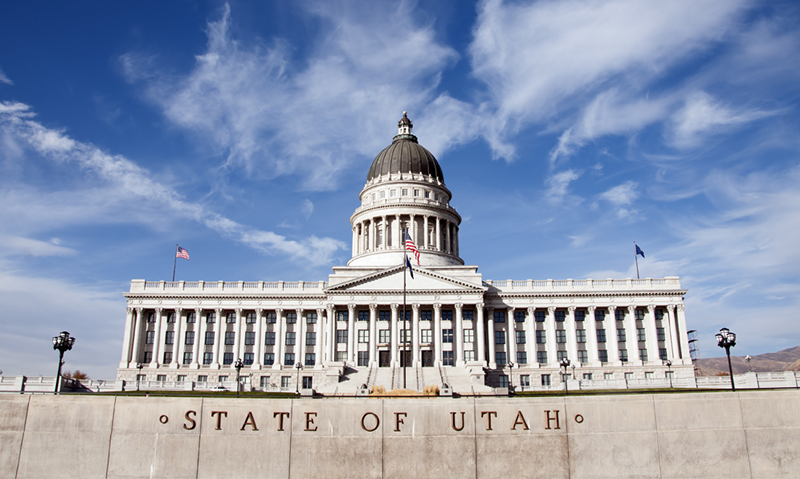



By Adam Andrzejewski
Recently, Congress passed the $1.9 trillion American Rescue Act along party lines – no Republicans voted for the legislation. Within the bill, there was $350 billion allocated to states, tribes, territories, and 30,000 localities.
House Speaker Nancy Pelosi forecast that “republicans would vote no and take the dough.” So far, she’s right, as no republican governor has returned the funding.
A case in point is Utah Gov. Spencer Cox (R). Utah state government received $1.5 billion from the Rescue Act. However, the state has an estimated $1.5 billion budget surplus for 2021.
Gov. Cox forecast a $427 million surplus for 2021 and already expected to have a $1.1 billion one-time surplus. The total extra funds in the state budget amounted to $1.5 billion.
So, what’s the compelling public purpose for Congress to send Utah $1.5 billion in coronavirus aid? Considering the strength of their state economy, what’s the governor’s argument to keep the money?
We reached out to Gov. Cox for comment on these important issues, however, we didn’t receive a response. Although U.S. Senator Mitt Romney (R-UT) voted against the bill, he hasn’t weighed in on the Utah “bailouts.”
Our auditors at OpenTheBooks.com mapped every government receiving the congressional bailout. Look up your hometown by clicking one of the 50 pins (state capitol) and then scroll down to the chart beneath the map to see the local areas that received Rescue Act aid.
Beyond the $1.5 billion in aid to Utah state government, a lot of taxpayer money also flowed to Utah’s counties and cities.
Here’s a high-level breakdown of congressional bailout flowing into communities across Utah.
Salt Lake County - $225 million
Salt Lake County is the most populous in the state with an $1.1 million residents. The county is home to the state capital and its largest city, Salt Lake City. Roughly 1 in every 3 Utahns lives in this county. With $225 million in aid, the county collected the equivalent of about $225 for every resident.
Utah County - $123 million
Utah County is the second most populous county in the state with 636,000 residents. That means the county collected about $193 per person.
The county is home to the Church of Jesus Christ of Latter-Day Saints (LDS) and Brigham Young University located in the city of Provo ($31.6 million in aid).
Brigham Young was the founder of Salt Lake City, the first governor of the Utah Territory and second president of the LDS.
Salt Lake City - $87.5 million
Salt Lake City is the state capitol and is known for its ski resorts. In 2002, the city hosted the Winter Olympics.
It’s also home to the Salt Lake City Temple. The 174-year-old Mormon Tabernacle Choir performs in the Salt Lake Tabernacle. With an estimated population of 197,756, the equivalent aid for every resident amounted to $442.
Davis County - $69 million
With some ski resorts of its own, Davis County is considered a “bedroom community.” With a population of 355,000, the county collected $194 in stimulus funds for each resident.
Weber County - $50.5 million
The county is home to Weber State University, also founded by The Church of Jesus Christ of Latter-day Saints. With 260,213 people, the stimulus works out to be about $194 per resident, the same rate of funding as Utah County and Davis County.
Washington County - $34.4 million
The county is home to Zion National Park and Snow Canyon State Park, and has 177,556 residents — an average $194 per person in aid — the same rate as Utah, Davis and Weber counties.
West Valley City - $28.3 million
The second largest city in the state, West Valley has 136,009 people — an average of $208 per person in aid. A suburb of Salt Lake City, West Valley is relatively new, only incorporating in 1980. The city is home to The Maverik Center which houses the professional hockey team, the Utah Grizzlies.
Review the rest of Utah’s localities receiving congressional aid here.
The Utah state economy remained strong as they successfully navigated the pandemic and the state government has a $1.5 billion surplus. Therefore, it’s mind-boggling that the state collected an additional $1.5 billion from the $1.9 trillion stimulus package.
Critics say that Congress needs to do a better job of letting states manage their own affairs and stop the taxpayer-funded bailouts of states and localities.
However, Speaker Pelosi was right: republican members of Congress voted no, but their governors took the dough.
A request for comment to the governor’s office wasn’t returned by our deadline.